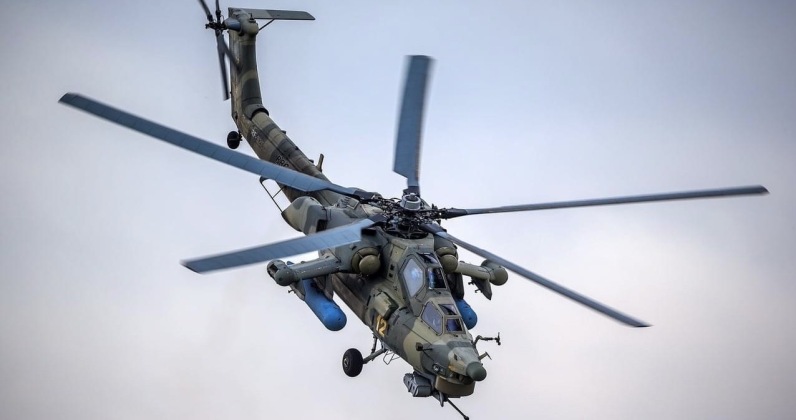News
Amid Tensions with Israel Iran Confirms Buying Russian Mi-28 Attack Helicopters and Su-35S Fighters

On November 28 Iranian Deputy Defence Minister Mehdi Farahi confirmed that the country had finalised plans to receive Mi-28 attack helicopters, Su-35 fighter aircraft and Yak-130 fighter/trainers from Russia. The report comes amid a massive surge in the American military presence in the Middle East, and at a time of high tensions with both the United States and Israel over ongoing hostilities in the Gaza Strip. It follows longstanding speculation surrounding Iranian purchases of Russian combat aircraft, and multiple reports regarding the acquisition of Su-35s in particular. Iranian orders for Su-35 fighters were widely reported by Western sources from January 2022, although at the time the contract was estimated to be worth far more than the actual costs of the hardware Iran was said to be purchasing and S-400 air defence systems were reported to be part of the deal. In September that year, however, the commander of the Iranian Air Force General Hamid Vahedi confirmed that the service was considering acquiring the Russian aircraft. This was followed by the appearance of Yak-130 trainers in Iran one year later in early September 2023, with the importance of these aircraft to preparing personnel for Su-35 operations serving as an indicator that the Russian fighters were likely to be delivered in the coming months.
Iran’s defence sector has been successful in providing for the country’s needs, most famously with a range of advanced drone designs including flying wing stealth aircraft, but also with assets such as surface destroyers, transport aircraft, and long range air defence systems. The country’s manned combat aviation industry, however, remains considerably behind the cutting edge, meaning although the Su-35 is not Russia’s most capable fighter, and is considerably less advanced that the latest American and Chinese fighters, it is still overwhelmingly more capable than anything Iran currently fields and technologically at least two decades ahead. The country is reported to have ordered around two dozen Su-35s and be considering acquisitions of over 60 to form the new backbone of the fleet. In early February images of a new airbase in Western Iran provided multiple indications that it was intended to host Su-35s, with the facility named Eagle 44 being built under a mountain with very heavy fortifications.

The Mi-28 attack helicopter has the potential to be considerably more transformative for Iran’s overall military capabilities than the Su-35, with the attack helicopter class having no near peer rivals outside Russia and bringing capabilities to the field which are in an entirely different league to Iran’s current inventory of Vietnam War era American AH-1 helicopters. Iranian forces have experience operating alongside Russian attack helicopters in Syrian counterinsurgency operations, including Mi-28s and Mi-24s. Iranian forces also operated closely alongside the Iraqi Army in the mid-2010s, at a time when Iraq fielded its own Mi-28 units. The Mi-28 has an unrivalled flight performance and can carry up to 16 anti tank missiles or 80 80mm unguided rockets, with the latest Mi-28NM variant having been employed in Syria and more recently on tank hunting missions in Ukraine. The Mi-28 could prove valuable both for overseas operations, including supporting Iraqi, Syrian or Hezbollah forces if needed, as well as for counterinsurgency domestically amid signs of growing Western support for anti government elements in the country. Unlike the Su-35s which appear certain to be intended for service in the Air Force, it remains uncertain whether Mi-28 helicopters would serve in the Air Force, the Army, or the Revolutionary Guard Corps – with the latter of these being responsible for overseas operations and consistently being prioritised to integrate the most capable hardware available.












